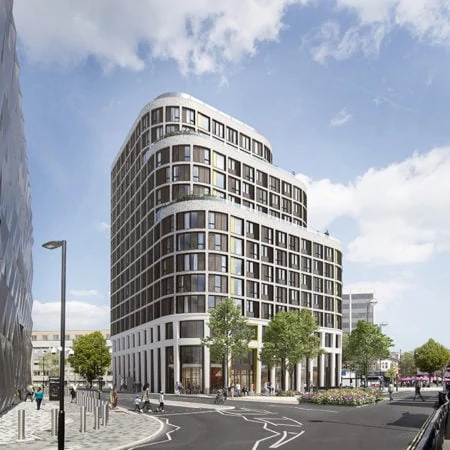The recent furore surrounding the Government’s extension of permitted development rights has been rather eye opening. The only measure of control on quality appears to be the insistence on the provision of windows.
But that demonstrates a horrifically narrow definition of what makes a home. Creating a quality place to live goes so much further than that – it means quality of space, control of noise, air quality, privacy, a sense of community, even the finer points of your refuse collection.
The impact of Covid-19 on residents
The lockdown has highlighted the importance of the quality of our domestic environment. The demands we make of our homes will be even greater in future, including space to work and access to gardens and outdoor space. There is undeniably an ‘evolution of expectation’.
Covid-19 has also enhanced localism – we are staying closer to home and are using the services closest to us. This trend is likely to continue as many people will commute less. In this sense Covid-19 has further highlighted the potential to bring more residential uses into our high streets and city centres, creating more vibrant local activity for them to thrive and survive.
The dynamism of our cities depends on people wanting to live and spend time in them – what we have here is a unique opportunity to consider how (and perhaps more importantly, who) will want to live in and use our towns and cities in future. It’s an opportunity to re-purpose, improve and rejuvenate – and one which shouldn’t be squandered.
Sustainable homes within urban centres
None of the challenges around office/retail conversions to residential uses are unsurmountable. It just takes creativity, considered design and control. Given the scale of the climate crisis we face, re-using and retrofitting the buildings we already have needs to become the default position. The problem with permitted development rights is that, as an approach, it does not encourage the necessary creativity. It’s a short-termist, kneejerk solution – which is fundamentally uncontrollable. There is need for change of use but the quality control simply isn’t there.
Instead, we need to be thinking bigger and bolder. There are other ways to integrate residential with retail or commercial uses in our urban centres and do so far more effectively.
Look at co-living. There’s a temptation to think that Covid-19 and the threat of further pandemics have killed off any concept of communal living. Yet if you look at occupancy levels in co-living developments, they have stayed at around 70% throughout the crisis – far from the exodus many would assume.
If anything, the pandemic has given a new relevance to co-living as an urban residential model. Young people don’t want to feel isolated in big cities and are looking for connections to their peers and a sense of community. Co-living schemes also provide access to shared amenities and communal areas – such as workspaces, cafes, libraries, gyms, gardens – that you might not otherwise get in your typical one-bed flat. It also helps that they’re managed environments, able to instigate strict cleaning regimes and health and safety protocols.
More than that, it comes back to quality. Co-living schemes centre on creating quality spaces people want to live in. Spaces that are aspirational and support a community where the individual can be less isolated.




